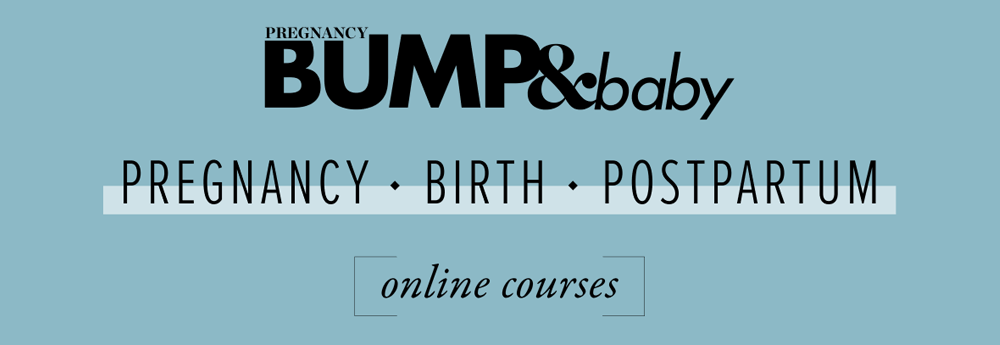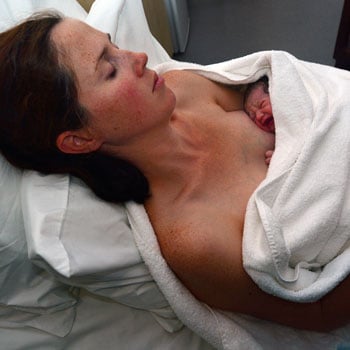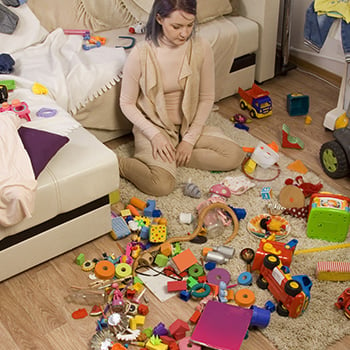It can be challenging for mums who are using baby bottles to find accurate information on how to use them safely. Here are some answers to your frequently asked questions about using bottles.
You may be returning to work or simply want to have a night out with your partner, or perhaps it’s Dad’s turn to help with the nighttime feeds. Whatever your reason, choosing to feed your baby with a bottle is a personal decision, and it’s important that you have the right information to ensure you’re using bottles safely. New mums often don’t know where to begin when it comes to using baby bottles. Here are some answers to your frequently asked questions about getting started with bottles.
How many bottles do I need to buy?
Answer: This depends on personal preference, whether your baby is taking a bottle full-time or only occasionally, and how frequently you want to be washing and sterilising your bottles (once a day all at once, or after every time your baby has had a bottle). You need to have the right number and size of bottles for the amount of food your baby needs, and you need to have enough bottles to be sure to always have a clean bottle to feed at hand. A smaller 125ml bottle is ideal for the rst eight weeks of your baby’s life, when younger babies eat smaller amounts but feed more frequently. Larger 260ml bottles are more appropriate for when your baby starts feeding less frequently or wanting to drink more than one 125ml bottle.
How many bottles of each size do I need? At what point do I switch from using smaller to larger bottles?
Answer: The younger the baby, the more frequent feeds they require per day. Thus the smaller 125ml bottles are a good option for young babies. The older the baby (from around eight weeks), the less feeds per day they require, so the less bottles you will need – but larger 260ml bottles will work better. When to switch bottle sizes is about the moment your baby is drinking more than a smaller bottle per feed. At this point, switching to a larger 260ml bottle is more sensible, so you can make a whole feed in one go instead of making one bottle and then needing to make a re ll. Every baby is different, but usually around two months of age is when babies start to want a larger amount at their feed.
Getting started
When you’re giving your baby a bottle, there are a few things you need to be aware of before bottle preparation.
- Always clean and sterilise all bottle feeding parts before each use.
- Wash your hands thoroughly and make sure your surfaces are clean before handling the sterilised equipment.
- Don’t use abrasive cleaning agents or anti-bacterial cleaners when you’re cleaning bottles and teats.
- To inspect the teat, pull it in each direction and look for cracks or punctures.
- Do NOT use a microwave for heating or defrosting breast milk. It can destroy important qualities of breast milk.
- It is also advised not to warm milk in a microwave, as this may cause uneven heating and could scald your baby. Alternatively, place the container of milk in warm water until the milk thaws. Warm it to body temperature in a bowl of hot water.
- Always check the milk temperature before feeding by squirting it onto the inside of your arm.
- Use the milk immediately and throw away any left over after the feed. It’s not safe to reheat or refreeze milk.
- Make sure that the bottle lids are not over-tightened.
Do not use the microwave to heat or defrost bottles. Yes, it seems like the most convenient option, but it’s not safe.
Top tips
Your baby will enjoy feeding from the bottle more if you smile and chat to them.
Tilt the bottle so that the neck and teat ll up with milk before you carefully place the teat in your baby’s mouth – this avoids swallowing any air bubbles, which could cause gas.
If your baby seems unsettled during the feed, the cause may be wind – try gently rubbing your baby’s back to encourage burping.
Try to get into the habit of burping about halfway through the feed and after feeding – this can help to prevent spitting up.
How much should my baby be drinking?
Answer: The scientific table below gives an indication of the average amount your baby will drink from
the bottle or breast, by age. Please keep in mind that this is only a guide – your baby may drink more or less depending on a number of factors, so this should not be adhered to rigidly. With bottle-feeding, you can track amounts, which you cannot do if you are breastfeeding – but if you are breastfeeding there are other factors you should take into account to ensure your baby is receiving enough milk (wet nappies, steady weight gain, a baby who is well and happy). Talk to your GP, LMC, or Plunket nurse if you are concerned about how much your baby is drinking.
What’s the difference between bottle materials?
Answer: With baby bottles, you usually get what you pay for – the el-cheapo supermarket bottles are not the safest choice. If you’re buying plastic bottles, check they are BPA-free. BPA stands for “bisphenol A”, a chemical which has been used to make plastics and resins. Some research has shown that BPA can leach into food or drinks from containers which are made with BPA, and exposure to BPA is a concern because there are possible health effects. Glass bottles should be made from pharmaceutical-grade glass which is heat-resistant and thermal shock resistant. Some baby bottles are made from food-grade stainless steel, which is durable and unbreakable. It’s your choice what you type of bottle you prefer for your baby.
How do I clean my bottles and teats?
Answer: If you have a dishwasher, ensure your bottles and teats are dishwasher safe. Place the small parts on the top rack of the dishwasher or in a special basket which sits in the top rack of your dishwasher and keeps small items from being tossed around during the cycle. Bottles and rings can also be hand-washed in the sink with plenty of hot, soapy water. When hand-washing teats, use only your ngers and warm soapy water. Avoid washcloths, sponges, and bottle/teat brushes with bristles that may tear the silicone. When your bottles are clean and rinsed, you can sterilise them by using an electric or microwave steam steriliser, or boil them in a pot on the stove for ve minutes. Remember, your bottles must be fully disassembled and clean before you sterilise them. Also, there is no need to turn the teat inside out during washing and sterilising.
When can I stop sterilising bottles and just wash them with hot, soapy water?
Answer: Good hygiene is crucial in your baby’s first year. Babies’ immune systems are not yet mature enough to fight off all the harmful bugs that adult bodies can cope with, so they are more vulnerable to viruses, bacteria and parasitic infections. Steam sterilisation is recommended for at least the rst 12 months of your baby’s life.
How do I know which teats my baby needs?
Answer: Teats are available in different ow rates for your growing baby and often have numbers on them to indicate which stage they are for. Check the teat which comes with the bottle you have purchased, or check the packet for replacement teats to see which stage/age it is recommended for. Depending on the age of your baby, teats may have one, two, three, or four openings for uid, which means your baby will be getting either a slow, medium, or fast ow. A newborn baby will normally need an extra-soft, newborn- ow teat. Younger babies need a slow ow, while older babies prefer a faster ow. Teats which are made for older babies may also be bite-resistant as babies love to chew everything in sight when their teeth start to come in. It is recommended that you use slower- owing teats if you are feeding your baby expressed breast milk, and also for babies under the age of six months.
When do I move to the next step up in teats?
Answer: Different teats represent different fluid flow rates, from slow to faster. If you’re breastfeeding and feeding your baby expressed breast milk, it’s better to stay with a slower-flow teat. If your baby is becoming frustrated at mealtimes – you may notice them suckling hard and then pulling away and crying, then suckling hard again – or if they are taking longer than 20 to 30 minutes to nish a bottle, this may be an indication that the current ow is too slow. Try a teat with a higher flow rate and see if that helps. However, if your baby has let go of the teat and is spilling milk, is getting too much milk to swallow, or milk is dripping out from between their lips and the teat while they are drinking, the flow rate may be too fast and you should try a teat with a slower ow rate. You may also like to try variable-flow teats that can give slow, medium or fast ow using just the one teat, by turning the bottle so the ow mark is in line with the baby’s nose. The variable flow teat is also recommended for thicker liquids.
It’s important that you have the right information to ensure you’re using bottles safely.
How often do teats need to be replaced?
Answer: This depends on how often your baby is receiving a bottle. For babies who take the occasional bottle, teats may last longer, while if your baby is having bottles full-time, the teats will need to be replaced more often (every three months is recommended). Check them regularly for signs of wear and tear. If you notice cracks, tears, punctures (from little teeth!), or breaks, it’s time to replace the teat. Also watch for signs of discolouration, and if the liquid pours out of the teat in a stream, the hole or holes may have stretched and the teat needs replacing.
How do I store expressed breast milk?
Answer: When you’re using a breast pump, you might extract more milk than your baby can drink in one meal! Fortunately, you can easily store it for future use. Breast milk can be kept at room temperature for four hours or refrigerated immediately and stored on a shelf in the fridge to add to during the day (if you are expressing a few times a day), you can add newly expressed milk to previously expressed milk, but only add milk that has been expressed into a sterilised bottle or breast milk container, and only make one batch of milk per day – don’t carry over. Also, don’t add freshly expressed breast milk to previously frozen milk or to milk that’s already in a container in the freezer. You can store breast milk in the freezer for up to three months, as long as it is stored in either sterilised bottles tted with a sterilised screw ring and sealing disc, sterilised storage cups, or sterilised milk storage bags. Clearly label each container with the date and time it was expressed, and use older breast milk first.
Tip: Only store breast milk which has been collected with a sterilised breast pump.
BUMP&baby
BUMP & baby is New Zealand’s only magazine for pregnancy and early babyhood. Our team of mums and mums-to-be understand what it’s like to be pregnant in this connected age, and that’s why BUMP & Baby online is geared toward what pregnant women and new mums really want to know.
Other articles of interest
Giving birth naturally — your way
With all of the birth techniques available, how do you know which one is right for you?
Beyond the baby blues
It’s normal to feel a bit down following childbirth. But what if your feelings don’t improve, or you aren’t coping? You may have postnatal depression, also known as PND









